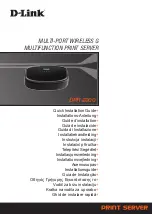
SuperServer 6019P-WT/WTR User's Manual
20
Warning:
Stability hazard. The rack stabilizing mechanism must be in place, or the
rack must be bolted to the floor before you slide the unit out for servicing. Failure to
stabilize the rack can cause the rack to tip over.
2.3 Installing the Rails
There are a variety of rack units on the market, which may require a slightly different assembly
procedure.
The following is a basic guideline for installing the system into a rack with the rack mounting
hardware provided. You should also refer to the installation instructions that came with the
specific rack you are using.
Identifying the Sections of the Rack Rails
You should have received two rack rail assemblies in the rack mounting kit. Each assembly
consists of an outer fixed rack rail that secures directly to the rack itself (see Figure 2-1).
Two pairs of short brackets to be used on the front side of the outer rails are also included.
Installing the Outer Rails
Begin by measuring the distance from the front rail to the rear rail of the rack. Attach a short
bracket to the front side of the right outer rail and a long bracket to the rear side of the right
outer rail. Adjust both the short and long brackets to the proper distance so that the rail can
fit snugly into the rack. Secure the short bracket to the front side of the outer rail with two
screws and the long bracket to the rear side of the outer rail with three screws. Repeat these
steps for the left outer rail.
Locking Tabs:
Both chassis rails have a locking tab, which serves two functions. The first
is to lock the server into place when installed and pushed fully into the rack, which is its
normal position. Secondly, these tabs also lock the server in place when fully extended from
the rack. This prevents the server from coming completely out of the rack when you pull it
out for servicing.
Warning:
do not pick up the server with the front handles. They are designed to pull
the system from a rack only.
















































